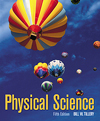In chapter 9 you learned how the concept of the atom was developed, evolving
into the modern model of a fuzzy cloud of matter with an internal structure.
We considered this internal structure and how the electrons make up the fuzzy
cloud in atoms of different elements. But there was no discussion about the
meaning or implications of the different structures or how they could be used
to understand the properties of matter. That is the goal of this chapter, to
understand matter based on the electron structure of atoms. The behavior of matter seems bewildering when you consider all of its different
kinds, forms, and shapes and all the changes it undergoes. Things seem bewildering
and confusing because you cannot make connections between behaviors; that is,
there are no apparent patterns. Often in such situations, the act of grouping
or classifying things by similar properties is helpful. Classifying helps you
to find patterns of similarities and identities of groups. Once you have a pattern,
you will want to find a reason for its existence. You are now on your way to
an understanding that not only accounts for the patterns but also provides a
means of organizing all the information as well. This chapter presents an example of gaining understanding through grouping,
which is also known as classifying (Figure 10.1). We will consider several different
ways to classify matter, for example, into classes of mixtures and pure substances.
Pure substances can be further subdivided into groups of elements and compounds.
Some of the more interesting elements will be described, along with how they
were named and their symbols. Matter can be classified other ways, including
changes in matter. All changes are either physical or chemical, and chemical
changes are the key to grouping according to the electron structure of atoms.
After an introduction of a few new properties of atoms, the periodic table will
be discussed in terms of its systematic classification of elements. This periodic
classification can be used to predict how elements react with one another, making
the study of matter much easier. |



 2002 McGraw-Hill Higher Education
2002 McGraw-Hill Higher Education